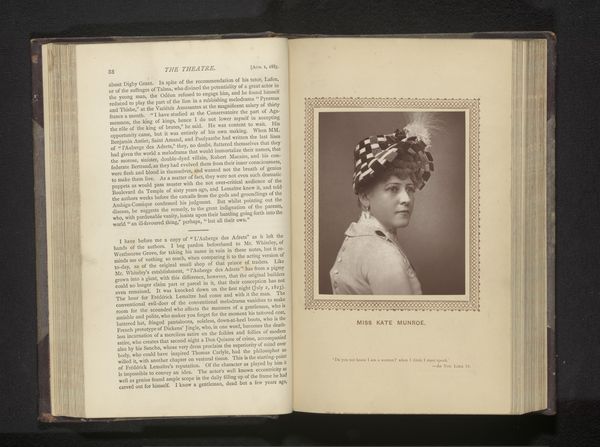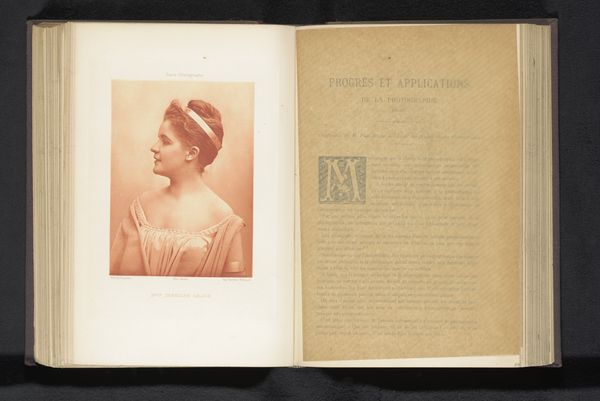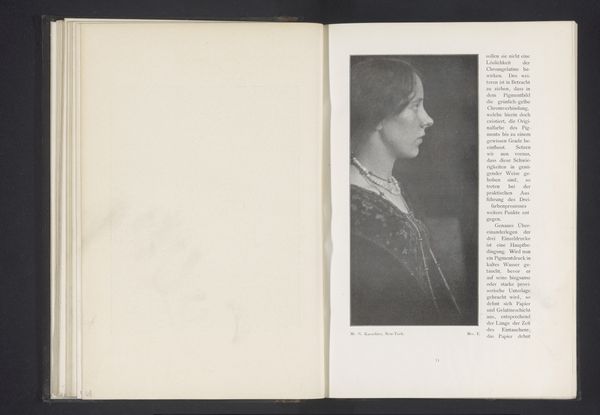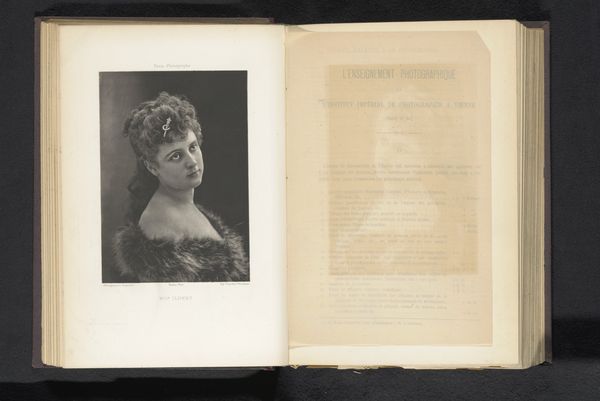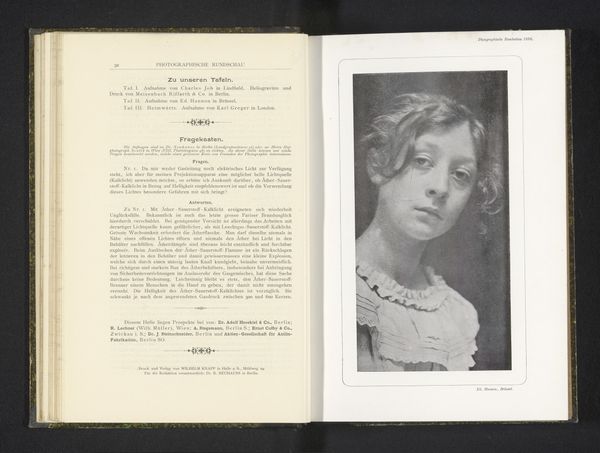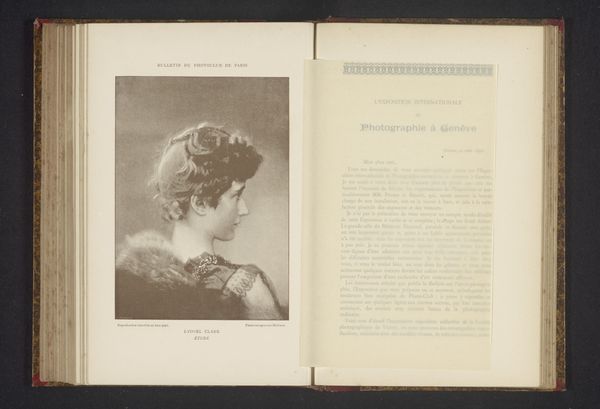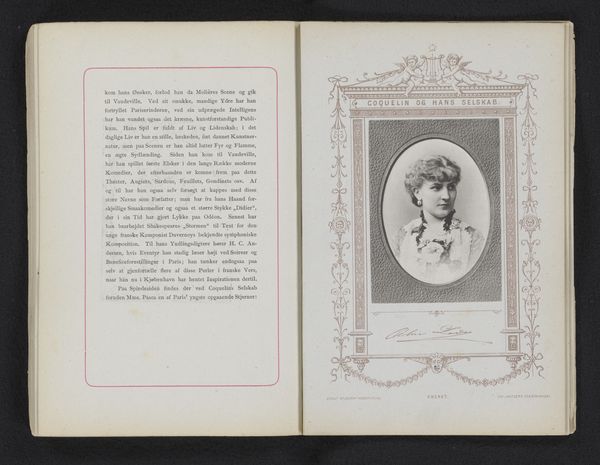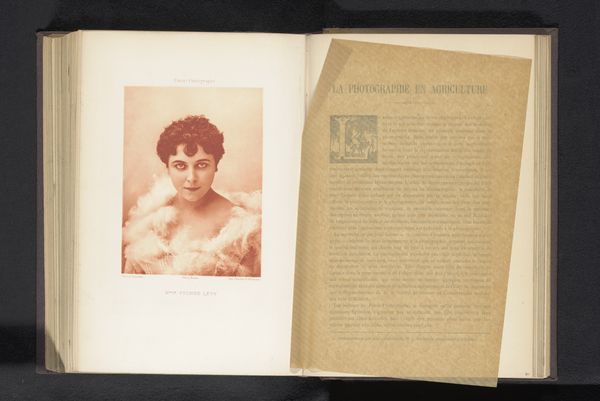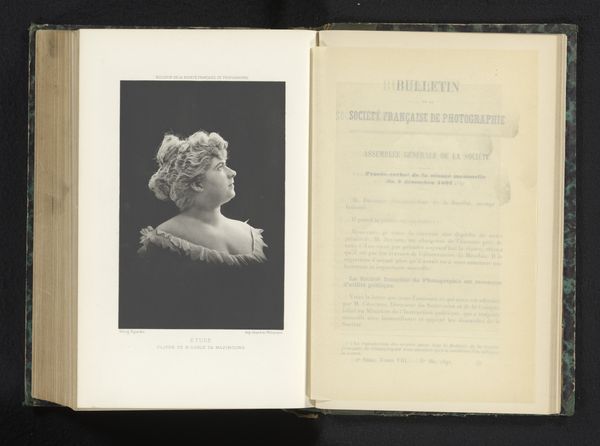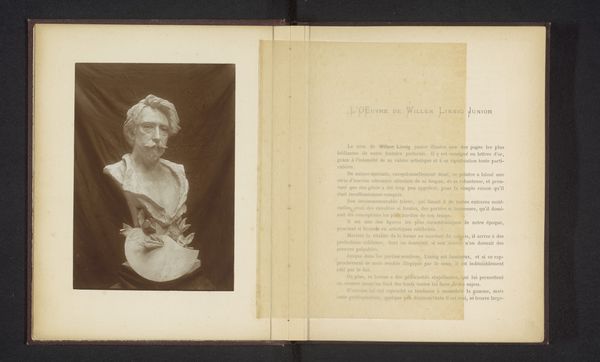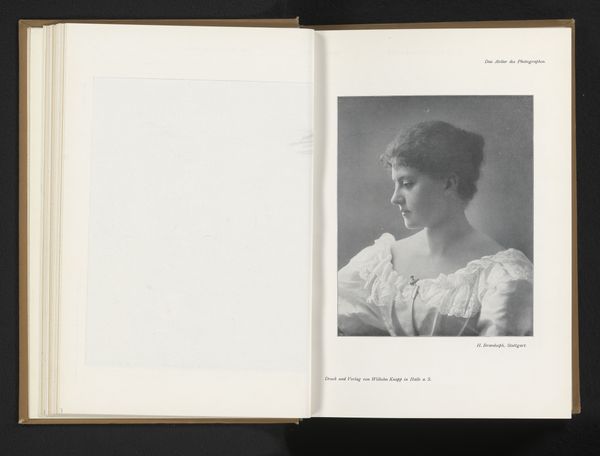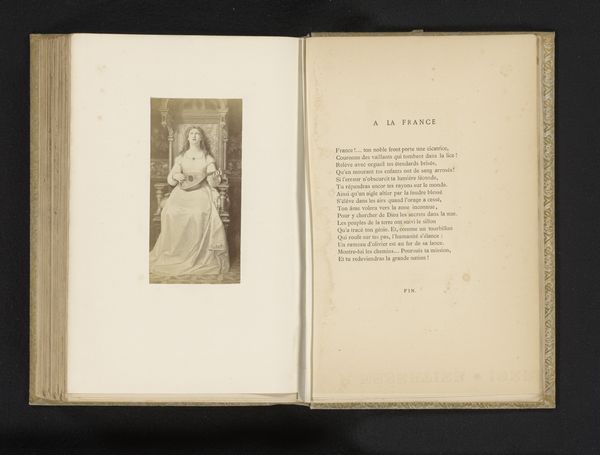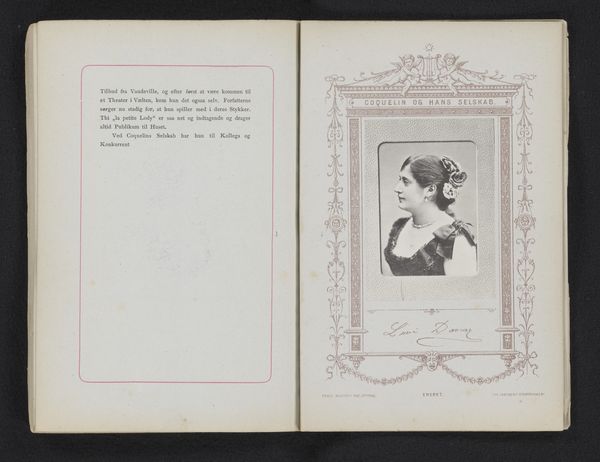
Dimensions: height 144 mm, width 105 mm
Copyright: Rijks Museum: Open Domain
Editor: Here we have a portrait by Nadar, whose name was actually Gaspard-Félix Tournachon. It's entitled 'Portret van vermoedelijk Beatrice Frances Elizabeth Pole-Carew', dating from before 1892 and held at the Rijksmuseum. It's presented as a photograph reproduced in a book, it seems. I find it elegant; her pose is graceful, but the reproduction mutes some of the detail. What strikes you first about the image, and its composition? Curator: The immediate allure resides, undeniably, in the delicate chiaroscuro – the subtle interplay of light and shadow across her face and the details of her hair and dress. The tonal gradations achieved through the photographic process lend the subject a gentle, almost ethereal quality, don't you think? Editor: Yes, the light is key. But is it a photograph of someone, or primarily a study of light? Is there something of the ‘academic’ about how carefully staged this feels? Curator: Precisely! Consider the composition, too. The close framing forces our focus onto the subject’s visage, compelling an intimate encounter. Further, it encourages an aesthetic distance where one can decode symbolic values of academic portraits. Observe how the soft focus minimizes any stark contrasts. Do you believe it to amplify a desired idealism or simply lack photorealistic details of its sitter? Editor: I think that the formal elements highlight beauty. It creates a certain mood, an idea about a person. It’s about presentation rather than factual representation. Curator: Indeed. Ultimately, this portrait stands as a testament to Nadar's technical mastery and acute sensitivity to aesthetic expression within the relatively young medium of photography. Editor: Thank you; I never thought about photography in this way before. Curator: A pleasure. Considering the internal logic and language of image-making provides such a rewarding challenge.
Comments
No comments
Be the first to comment and join the conversation on the ultimate creative platform.
